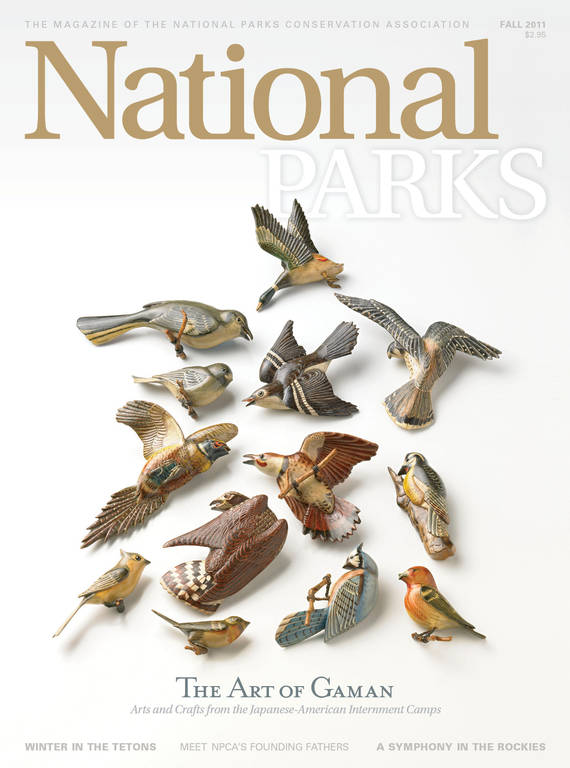Fall 2011
A Road Less Traveled
Students reconnect with African-American history on an 1,800-mile journey along the Underground Railroad.
In 2006, Suepinda Keith decided to rekindle an old flame: cycling. She and her husband, Kevin Hicks, bought new bikes and began venturing out onto the streets of Chapel Hill, North Carolina, on the weekends. Pretty quickly, they started to notice something: The vast majority of cyclists all looked the same—avid “roadies” donned in spandex and brightly colored jerseys, riding expensive bikes. “We kept wondering, ‘Why aren’t there any kids out here on bicycles?’” Keith says.
For the most part, Chapel Hill is a highly educated, well-to-do community, but a handful of its children—mostly African-American and Hispanic kids—come from cash-strapped, single-parent families, where bikes tend to sink to the bottom of a long list of financial demands. Keith and Hicks knew these kids and their situations well; for six years, they had been working with local nonprofit groups focused on youth, including one whose goal is to help underserved kids reach their creative and academic potential. So when the couple set out to get more kids on bikes, they immediately turned to the ones they knew. Slowly but surely, their fledgling nonprofit—Spoke ‘n Revolutions Youth Cycling—was born.
Their first goal: to build up a small but sturdy collection of old, donated bikes, with help from the Recyclery, a local bike co-op. Their second goal: to find underprivileged kids who actually wanted to ride those bikes. After a series of talks at local high schools, Keith managed to recruit a small group of sophomores. But she didn’t just want to give them bikes; she wanted them to make those bikes their own. So the Recyclery trained the kids to be bike mechanics and make their own repairs. Then Keith and Hicks began leading the students onto the streets, where they learned to ride comfortably in traffic and in a pack. By their junior year, they were ready to test their legs—and their resolve—with a cross-country bike ride. From a few possible routes rose a clear winner: A month-long journey, from Alabama to New York, tracing the Underground Railroad—the very same routes enslaved African Americans used to obtain their freedom during the mid-19th century.
“These kids have a personal connection to this history,” Keith says. “It really means something to them. They weren’t just riding 1,800 miles to say they could do it—they wanted to honor the slaves, the conductors, the stationmasters, and all the wonderful people who risked their homes, businesses, families, and lives to help free African Americans 150 years ago.”
Last February, Keith approached Diane Miller, program manager of the National Underground Railroad Network to Freedom, with a modest request: free lodging in national park units in exchange for volunteer work. Inspired, Miller came back with an even better offer: the support of the Network-to-Freedom community—from Quaker families to Park Service staff—who could serve as modern-day “conductors” for the students, providing meals, housing, and history lessons along the way. “I had no doubt this journey would be life-changing for everyone involved, touching not only those on the ride, but also the people and communities who welcomed them,” Miller says.
On June 13, nine kids and two adult chaperones took their first pedal strokes along the Alabama-Mississippi border, with Keith driving ahead in the support van to make sure the roads were safe. They averaged 60 miles a day, stopping to rest their legs in gateway towns and camp in state parks. They braved thunderstorms, searing heat, and territorial dogs. They survived broken bikes, minor wipeouts, and enormous logging trucks. They even came to favor fruits and whole grains as a fuel source over Doritos and Little Debbies.
Most memorable, however, were the stories they came away with, thanks to ranger-led tours along the Natchez Trace Parkway in Mississippi, Fort Donelson National Battlefield in Tennessee and Kentucky, and Cuyahoga Valley National Park in Ohio.
“When it comes to American history, we don’t always hear about the amazing things that minorities did for our country,” Keith says. “Instead we tend to get this watered-down version—and when you only learn about history from the perspective of a white person, our African-American kids grow up thinking that their story isn’t as important. But on this route, these kids learned that their history is so much bigger and more powerful than what they’d been told.”
Not every lesson was so uplifting. At campsites, the kids found themselves surrounded by mostly older, white people in RVs—visitors who looked nothing like them. Why weren’t other kids of color taking advantage of these beautiful, fascinating places, too?
Keith couldn’t offer her students any explanations as to why minorities aren’t more engaged with the Park Service. Nor could she fully understand why, from Alabama to New York, people initially perceived the group as troubled. “People would say to me, ‘Oh, are you doing this to keep these kids off the streets?’” she says. “I would tell them, ‘No, they’re great kids. They’re going to go to college, they’re going to be change-makers, they’re going to do community service. They just happen to lack financial resources.’ I was shocked by this assumption that a group of minority kids must have done something bad to deserve an adventure like this. No one meant it in a malicious way, and it certainly didn’t take away from the importance of the trip. But I think our kids have to fight through a lot more prejudgment on a daily basis than we realize.”
It wasn’t the only judgment turned on its head. “Months before the trip, when I showed the kids that the route started in Alabama, they looked at me and said, ‘But Miss Sue, are we going to be safe?’” says Keith. “I just kept saying, ‘It’s going to be okay. There are nice people wherever you go—we’ll find them, they’ll find us.’ And it was true—the kids met the nicest people—people who opened their homes to them, fed them, gave them directions, gave them thumbs-up and high-fives. People were so impressed that they would reach into their wallets and give them $20, which we used for meals. I think we collected $200 from random strangers this way—they were our unexpected ‘conductors’ on the road.
“We had a couple of incidents that were really nasty, but we also had two thousand great experiences with really nice people. When it was all said and done, the students realized how wrong they’d been to prejudge white people in the South.”
On July 15, the crew reached its final destination—Niagara Falls, New York. But unlike the experiences of most visitors to the falls, the students’ “wow” moment didn’t come from the scenery itself. Instead, it came from standing on the same ground where Harriet Tubman helped usher slaves to freedom across the Canadian border—and finally realizing the gravity of their own efforts to arrive there. “I woke up with my mind set on freedom,” wrote Itza Salazar, one of the students, in her final blog post. “I still can’t put words to the way I was feeling. All I really know is that we made it… we all completed an 1,800-mile journey… something that 31 days ago was nothing more than a goal, an idea, a distant thought.”
“At that point, our bikes were literally falling apart,” Keith says. “But I think the kids gained a sense that they can do anything.”
If Keith has her way, Spoke ‘n Revolutions’ adventures will have just begun. She’s already plotting a route for next summer’s senior ride, which will likely trace the Trail of Tears up through Oklahoma, then follow the Buffalo Soldiers’ biking excursion from Montana to Missouri. But that’s not all. Keith also hopes to fly a new set of restored bikes to Ghana, Africa, where her students would help set up a bike shop, teach locals to become their own bike mechanics, and empower the community with a much-needed mode of transportation.
“We never would have gotten this far without the National Park Service,” Keith says. “They did so much for us—it’s not something we could ever repay.” Unless, of course, you count the fact that she successfully engaged a new generation of kids in the parks. “I don’t know how to get more people of color to the parks, but taking these students is a good start,” she adds. “Maybe they’ll be inspired to take their own kids someday.”
About the author
-
 Amy Leinbach Marquis
Amy Leinbach MarquisAmy Leinbach Marquis is former associate editor at National Parks magazine.



